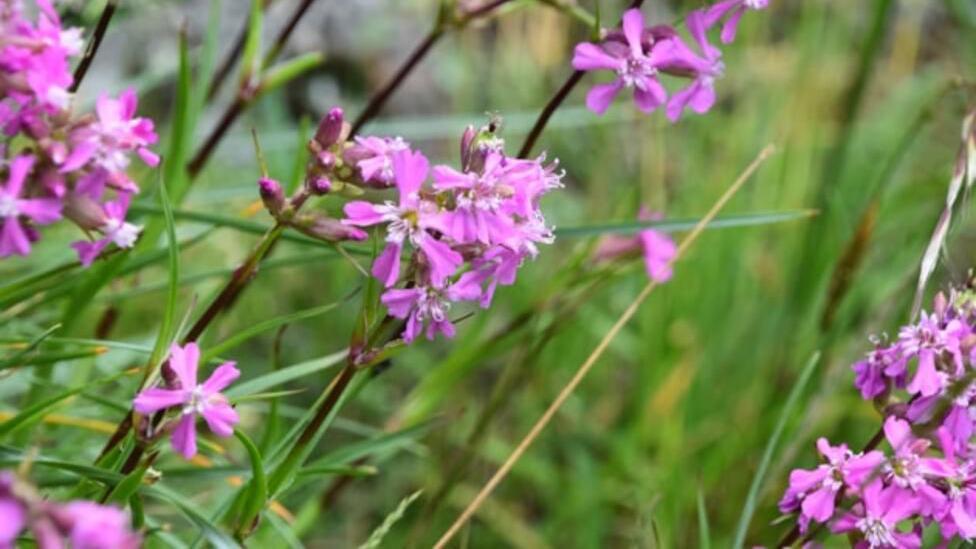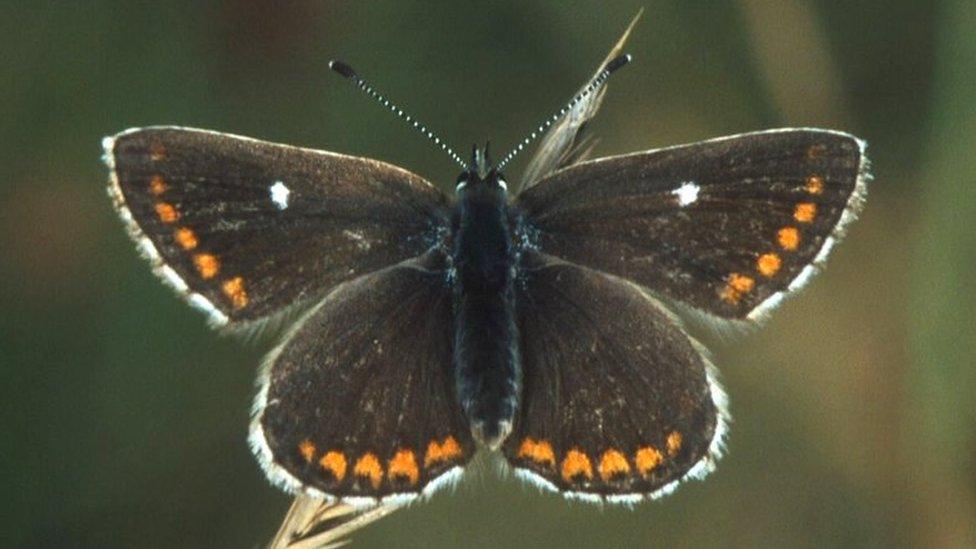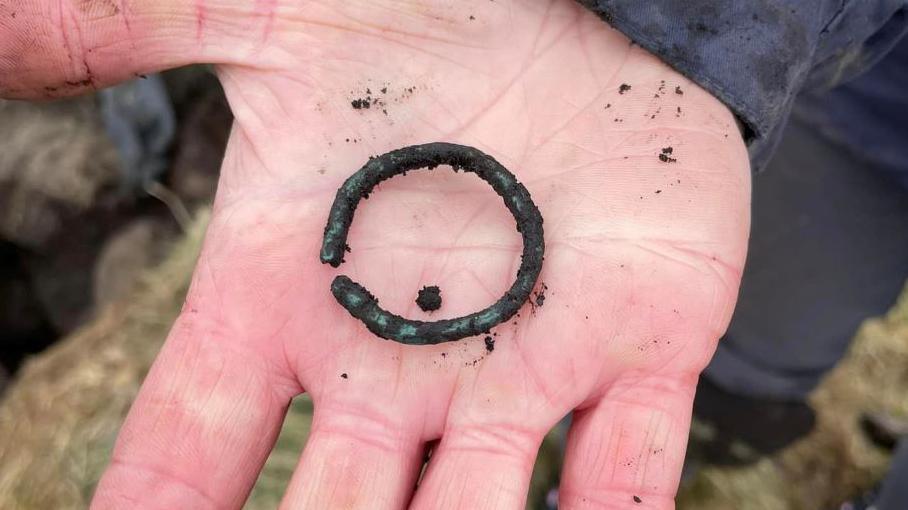Numbers of rare sticky plant treble in Ochil Hills

Sticky catchfly populations have recovered in central Scotland after colonies dwindled
- Published
Numbers of one of Scotland’s rarest plants have more than trebled on a hill in central Scotland following restoration work.
Sticky catchfly is a nationally rare species with fewer than 18 populations scattered across Britain.
Around 10,000 flowering stems of the plant were counted by volunteers during a three-day survey on Dumyat in the Ochil Hills - an increase from 3,000 in 2013.
The Future Forrest Company (FFC) took over management of the Dumyat site in 2021 and has since embarked on a native woodland and nature restoration programme.
This included removing sheep and reducing numbers of roe deer around the crags.
The plant has a long-recorded history in Scotland and is said to have been admired by James VI on the crags of Arthur’s Seat.
It can be identified by its pink flowers and sticky stem that prevents herbivorous insects such as aphids from climbing up it.
However its numbers have declined and disappeared from many of its former locations due to overgrazing and gorse encroachment.
The latest count on the Ochil Hills represents at least 20% of the known British population.
'Amazing results'
Lindsay Mackinlay, head of ecology at the FFC, said: “Many good people have worked over many years to try and conserve this gloriously beautiful plant at Dumyat.
"We were blown away by the willingness of so many people and organisations to help us count the number of plants up in the crags.
“We are even more delighted that the plant appears to be doing really well since we have reduced the grazing up there."
It is hoped that the species will continue to expand across the Ochils, with other land managers helping to join up existing populations of the plant.
NatureScot operations officer Stuart Bence, who surveyed the Dumyat plants in 2013, said: “These are absolutely amazing results.
"When we carried out the previous survey, we never thought we would see such high numbers and it is great news that the population seems to be spreading.
“To see the species going from being on a knife-edge to recovering so well is fantastic and just goes to show the benefits that the changes to land management in the area have brought about."
The conservation work has also benefited the rare Northern Brown Argus butterfly, which was seen on Dumyat for the first time in 100 years in 2023.
The habitat changes for sticky catchfly also supported the common rockrose plant which the butterfly’s caterpillars feed on.
- Published5 September 2023

- Published5 May 2023
